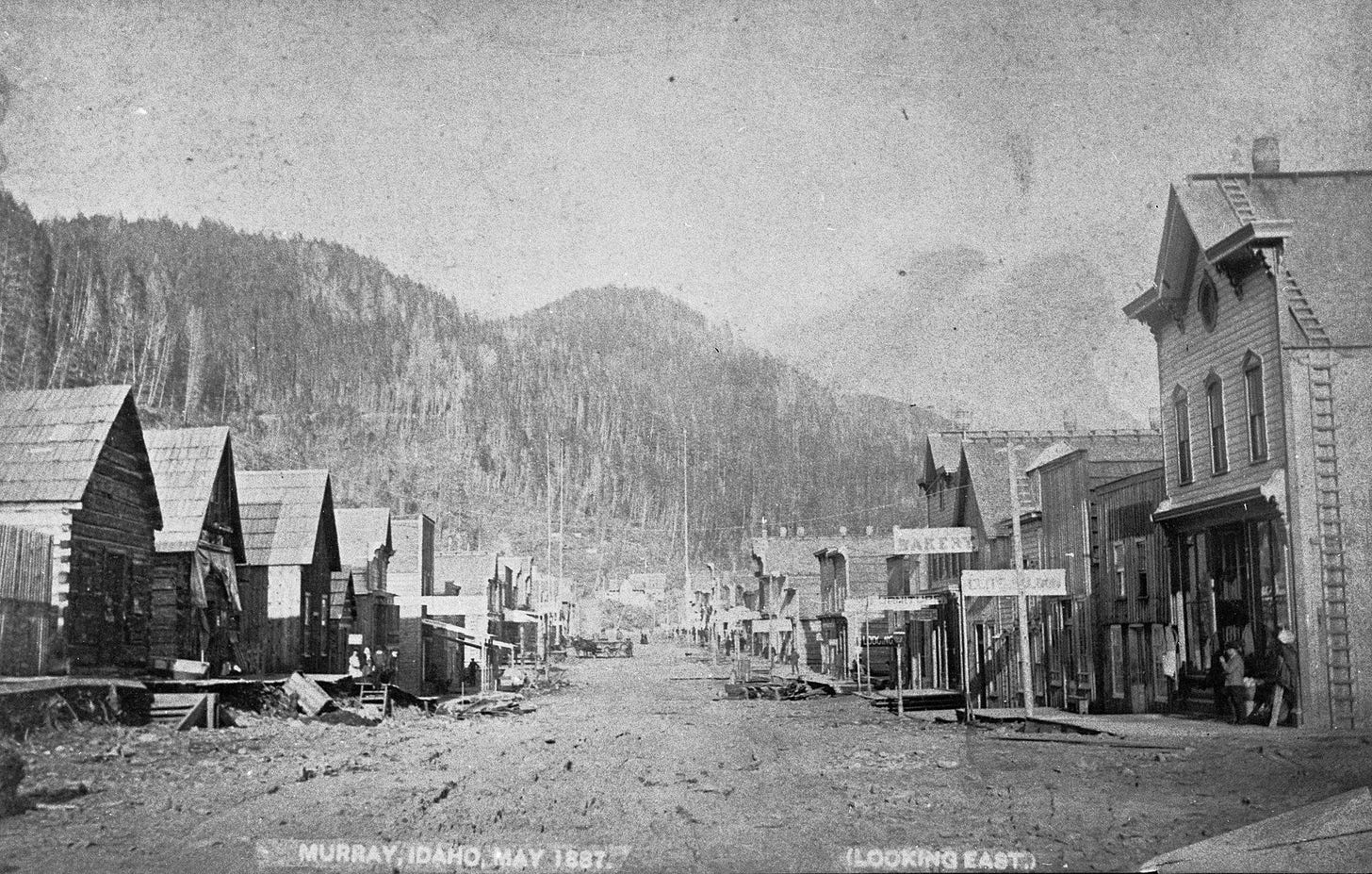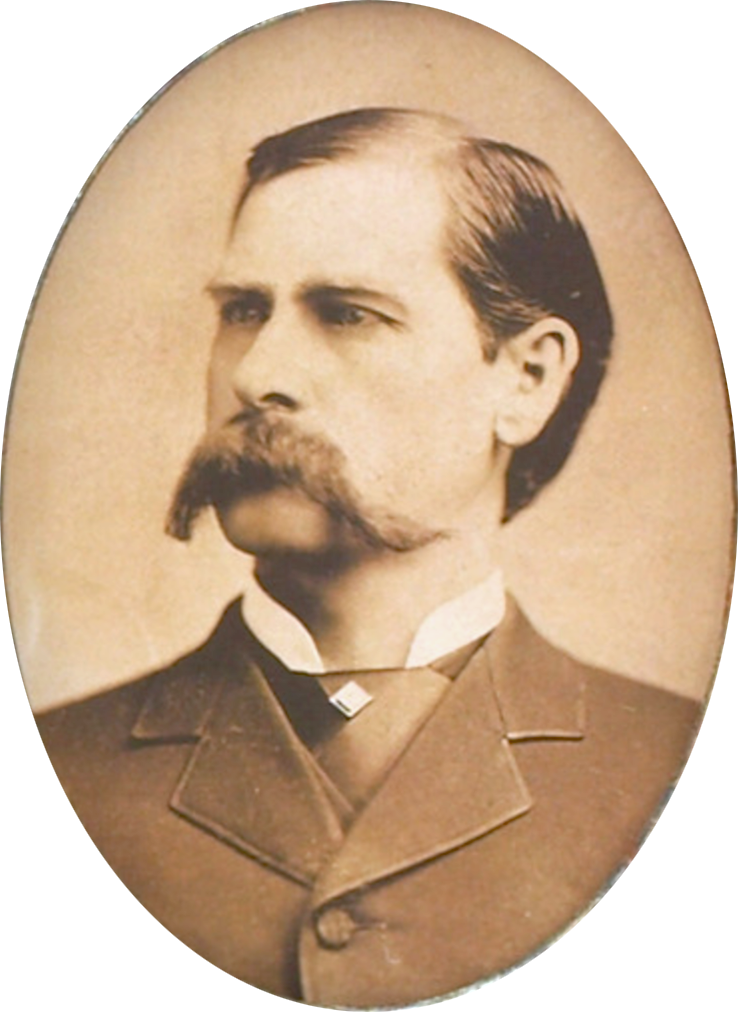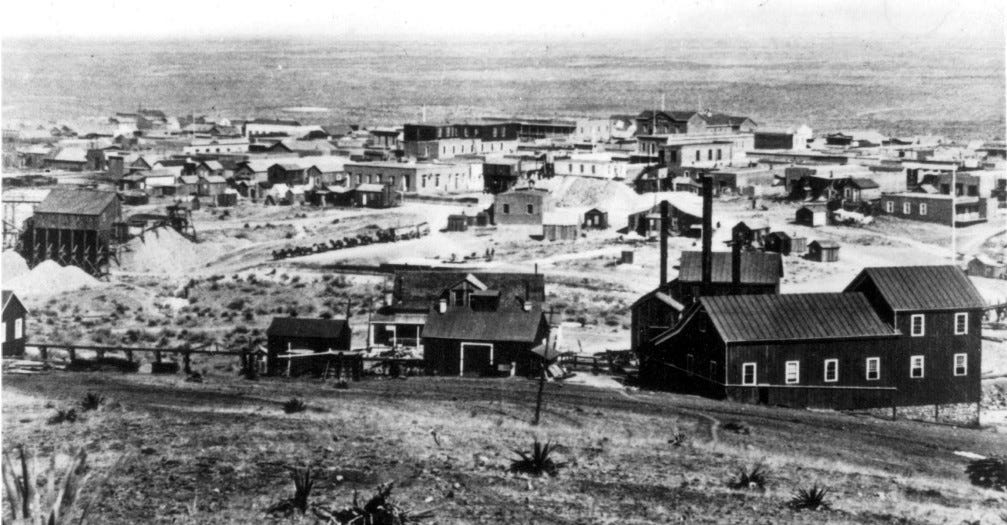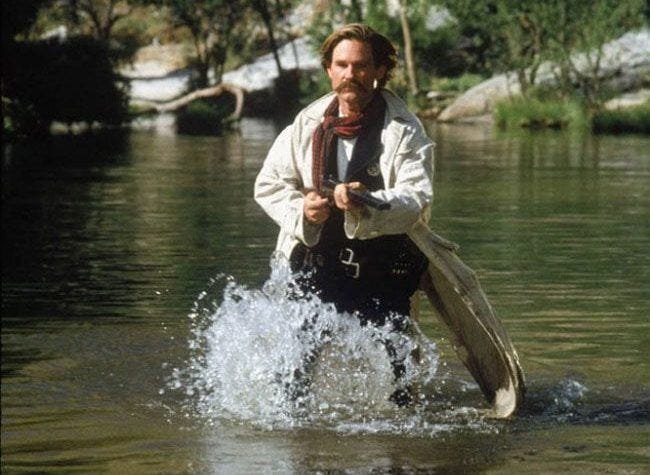“This is the West. When the legend becomes fact, print the legend.” —The Man Who Shot Liberty Valance
The Old West had already become legend even before it was done being history. Even as the frontier was closing down, traveling exhibitions such as Buffalo Bill’s Wild West Show brought the legends of the west to millions of Americans. Bill Cody’s troupe, which featured real-life legends such as Chief Sitting Bull and Annie Oakley, even performed for Queen Victoria in London. The earliest films in the late 1800s and early 1900s often featured western themes, which at that time were still essentially contemporary.
The early westerns of directors such as John Ford entertained audiences for whom the Old West was still in living memory. Many real-life figures of that era lived long enough to see their exploits on the silver screen, which were usually presented as larger than life. By the time the last people with living memory of the Old West were passing away, Hollywood had moved on to grittier deconstructive films such as those of Sergio Leone and Clint Eastwood.
Wyatt Earp died in 1929, just a few months before the start of the Great Depression. Shortly after his death, author Stuart Lake published a highly-fictional biography of Earp. His popularity skyrocketed, and before long Hollywood was making dozens of movies about his life. By 1959, the height of the western genre, no fewer than six television programs featured Wyatt Earp. John Wayne claimed to have based some of his lawman mannerisms on Earp, whom he met as a young up-and-coming actor.
Personally, I think Kurt Russell’s performance in Tombstone is the best adaptation of Wyatt Earp, both of the real man and the legend that developed. Watching that film, it is hard to picture the character living long enough to hang out in 1920s Los Angeles, full of cars, movie stars, and the art deco building boom.
The real Wyatt Earp really was larger than life in many ways. He already had experience in law enforcement and gunfighting by his early twenties, but soon faced a series of legal issues stemming from running a series of brothels in Illinois and Missouri. He moved to Kansas in 1874, where he served as assistant US Marshal in Wichita and Dodge City. During the process of fulfilling a bounty, his life was saved by a card player named Doc Holliday, who joined Earp and his brothers in moving to Arizona in 1879. It was there that Wyatt was involved in the shootout that would cement his place in history.
Tombstone, Arizona was one of many Old West boom towns where prospectors and settlers converged on some newly-discovered resource. Tombstone’s was silver. Wyatt Earp planned to make a living running a stagecoach for the miners and new settlers. By the time he got there, however, there were already two stage lines in operation, so he spent his time gambling instead. When Virgil Earp became Deputy US Marshall, the brothers had their first encounter with the Cowboys, a gang of scalawags and thieves.
One thing that many movie adaptations of the Shootout at the O.K. Corral leave out is the political aspect of the story. The Arizona Territory was in a state of flux, with new counties being formed and federal jurisdictions being worked out. By 1881, Wyatt Earp was Deputy US Marshall, under his brother Virgil. The Earps were staunch Republicans, while the Cochise County Sheriff was Democrat Johnny Behan. In contrast to our modern system, Republicans of that era were closest in affinity to the cities, while Democrats represented rural populations. In the wake of the shootout, Sheriff Behan was therefore much more sympathetic to the Cowboy ranchers than the conniving Earps.
If you’ve seen any of the many movie adaptations, you know the basic story of the Gunfight at the O.K. Corral. The actual gunfight lasted merely thirty seconds, yet it became the defining moment not only of Wyatt Earp’s career, but of the entire Old West. What really happened that day remains a topic of much dispute. Did the Earps murder Frank McClaury, Tom McClaury, and Billy Clanton in cold blood? Or did they, as duly-appointed lawmen, engage in self-defense against a band of outlaws? We will never know for sure.
Of course, that wasn’t the end of the feud. The Cowboys ambushed Virgil and Morgan Earp, killing the latter, which incited Wyatt to go on a roaring rampage of revenge that really was larger than life. The scene in Tombstone where Wyatt walks into the river, daring the Cowboys to shoot him, seems like typical Hollywood exaggeration, but apparently it really happened.
The difference between stories and real life is that real life doesn’t stop when the curtain comes down and the credits roll. Wyatt Earp continued his life after the events in Arizona, moving throughout the west with his common-law wife Josephine from one business venture to the next. In 1884, three years after the Gunfight, Earp made his way to the Idaho Territory, where the next mineral boom was taking place. Earp bought a circus tent in Eagle City and turned it into a saloon called The White Elephant.
Idaho was in the same state of flux as Arizona, with state and county boundaries being continually redrawn. Earp was appointed Deputy Sheriff for Kootenai County, and was involved in several mining disputes, one of which ended up in a shootout that Earp was able to peacefully defuse.
Wyatt Earp never stayed long in any one place, and soon he was on his way to California. But for a brief moment, a legend of the Old West crossed paths with the history of the Gem State. Idaho would achieve statehood just six years later, and soon the American Frontier would be consigned to the realm of legend. Today Eagle City is just another ghost town in Shoshone County, only remembered because of the famous feet that trod there.

Beyond the larger-than-life portrayals in Hollywood and dime store novels lived a breed of men and women who were not satisfied with life in the cities, and yearned for the uncertain freedom of the frontier. These are the people who built our states and our nation, and it’s on us to remember their stories.







We just watched “Gunfight at the OK Corral” on Amazon Prime. The movie may not have been accurate, but we enjoyed it. And especially, we enjoyed the beautiful backdrop of our hometown of Tucson, AZ, where the movie was shot.
Old Tucson was a popular movie set back in the day. The area was truly gorgeous in the “old days” of the 1950s.
Excellent article and fun to read. The current generation believes that history started with the Vietnam war. There was lots of history before this generation. When we fail to understand the history that made Idaho great, we consign Idaho history to being only what liberal educators tell us it was.